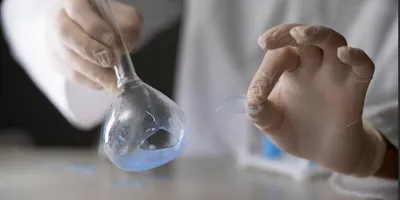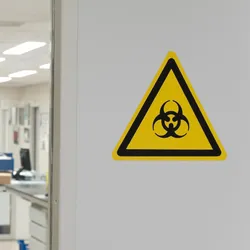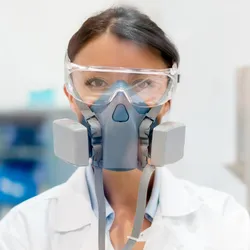Introduction to Safety-Coated Glassware
Laboratories rely on high-quality glassware for precise measurements, chemical reactions, and sample storage. However, traditional glassware is prone to breakage, leading to potential hazards such as chemical spills, exposure to hazardous substances, and injuries from broken glass. Shatter-resistant glassware and break-resistant glassware provide a safer alternative, reducing the risks associated with accidental drops and impacts.
Unlike standard glass, safety-coated glassware is designed with a protective polymer layer that enhances durability and impact resistance. This additional layer not only minimizes the risk of breakage but also helps contain shattered glass fragments if breakage does occur, improving overall laboratory safety. In high-risk environments where glassware is frequently handled, investing in safety-coated glassware can significantly reduce workplace accidents and material waste.
In this article, we will explore three key reasons to use safety-coated glassware in laboratory settings, emphasizing improved slip and impact resistance, enhanced employee safety, and increased longevity of laboratory equipment.
1. Enhanced Slip and Impact Resistance
Why Traditional Glassware Poses a Risk
Glassware used in laboratories is frequently exposed to moisture, chemicals, and handling variations, increasing the likelihood of accidental slips and breakage. Conventional glass flasks, beakers, and bottles become slippery when wet, making them difficult to handle safely.
How Safety-Coated Glassware Reduces Breakage
Safety-coated glassware is manufactured with a specialized polymer coating that significantly improves grip and impact resistance. The protective layer offers several advantages:
- Non-Slip Surface: The coating provides a textured grip, reducing the chances of accidental slips even when handled with gloves.
- Shock Absorption: The outer coating absorbs impact, making glassware less likely to shatter if dropped or bumped.
- Chemical Resistance: The protective layer is designed to withstand exposure to common acids, bases, and solvents, ensuring long-term durability in laboratory environments.
By investing in safety-coated glassware, laboratories can reduce costly glassware replacements while ensuring a safer work environment for researchers and technicians.
2. Improved Employee Safety and Hazard Prevention
Glass Breakage as a Safety Hazard
When traditional glassware shatters, it can lead to serious workplace injuries, including cuts, punctures, and exposure to hazardous chemicals. In some cases, broken glass can also contaminate samples, affecting research outcomes and requiring additional cleanup efforts.
How Safety-Coated Glass Protects Employees
Safety-coated glassware is specifically designed to contain breakage and prevent sharp fragments from scattering. The benefits include:
- Reduced Risk of Injury: If safety-coated glass breaks, the polymer layer helps hold the shards together, minimizing the chance of cuts or punctures.
- Minimized Chemical Exposure: In case of breakage, liquids remain contained within the coating, preventing spills and reducing exposure to toxic or reactive chemicals.
- Better Laboratory Hygiene: Since shattered glass is contained, cleanup is easier and faster, reducing downtime and the risk of secondary contamination.
In environments where researchers frequently handle volatile, corrosive, or biohazardous materials, safety-coated glassware provides an essential layer of protection against accidents that could compromise employee well-being.
3. Increased Longevity and Cost Savings
Frequent Glassware Replacement Is Costly
Laboratories that rely on conventional glassware often face high replacement costs due to frequent breakage. This not only increases expenses but also interrupts experiments and research activities, leading to inefficiencies.
Why Safety-Coated Glassware Is More Durable
Safety-coated glassware is engineered for longevity, offering greater resistance to everyday wear and tear. Key advantages include:
- Longer Lifespan: The protective coating extends the life of glassware by preventing micro-cracks and fractures that weaken traditional glass over time.
- Lower Replacement Costs: Since breakage is significantly reduced, laboratories save money by purchasing fewer replacements over time.
- Sustainability Benefits: Reduced breakage means less glass waste, contributing to more environmentally sustainable laboratory operations.
By incorporating safety-coated glassware into laboratory protocols, organizations can improve operational efficiency, lower costs, and create a safer workspace for their staff.
Frequently Asked Questions (FAQs)
1. Is safety-coated glassware suitable for all laboratory applications?
Yes, safety-coated glassware is designed for a wide range of laboratory applications, including chemical handling, sample storage, and biological research. However, users should verify compatibility with extreme temperatures or specific chemicals before use.
2. How should safety-coated glassware be cleaned and maintained?
Safety-coated glassware can be cleaned using standard laboratory glassware cleaning procedures. It is important to avoid abrasive scrubbers or harsh chemicals that may degrade the protective coating over time.
3. Does safety-coated glassware affect measurement accuracy?
No, safety-coated glassware maintains the same volumetric accuracy as traditional glassware. The protective coating does not interfere with measurement precision, ensuring reliable results in laboratory experiments.
Final Thoughts
Safety-coated glassware offers laboratories a highly effective solution for reducing breakage, preventing injuries, and increasing the longevity of essential equipment. With benefits such as improved slip and impact resistance, enhanced employee safety, and long-term cost savings, it is a smart investment for research facilities, educational institutions, and industrial laboratories alike.
By transitioning to safety-coated laboratory glassware, organizations can foster a safer, more efficient, and sustainable work environment while minimizing risks associated with traditional glass materials. Prioritizing safety in laboratory settings ensures that researchers and technicians can focus on their work with greater confidence and peace of mind.
This content includes text that has been generated with the assistance of AI. Lab Manager’s AI policy can be found here.
Introduction to Safety-Coated Glassware
Laboratories rely on high-quality glassware for precise measurements, chemical reactions, and sample storage. However, traditional glassware is prone to breakage, leading to potential hazards such as chemical spills, exposure to hazardous substances, and injuries from broken glass. Shatter-resistant glassware and break-resistant glassware provide a safer alternative, reducing the risks associated with accidental drops and impacts.
Unlike standard glass, safety-coated glassware is designed with a protective polymer layer that enhances durability and impact resistance. This additional layer not only minimizes the risk of breakage but also helps contain shattered glass fragments if breakage does occur, improving overall laboratory safety. In high-risk environments where glassware is frequently handled, investing in safety-coated glassware can significantly reduce workplace accidents and material waste.
In this article, we will explore three key reasons to use safety-coated glassware in laboratory settings, emphasizing improved slip and impact resistance, enhanced employee safety, and increased longevity of laboratory equipment.
1. Enhanced Slip and Impact Resistance
Why Traditional Glassware Poses a Risk
To continue reading this article, sign up for FREE to

Membership is FREE and provides you with instant access to eNewsletters, digital publications, article archives, and more.


















